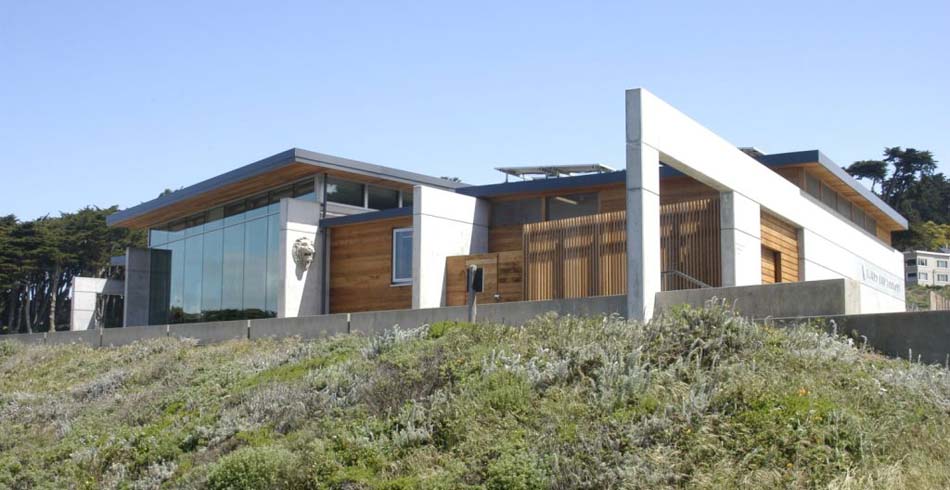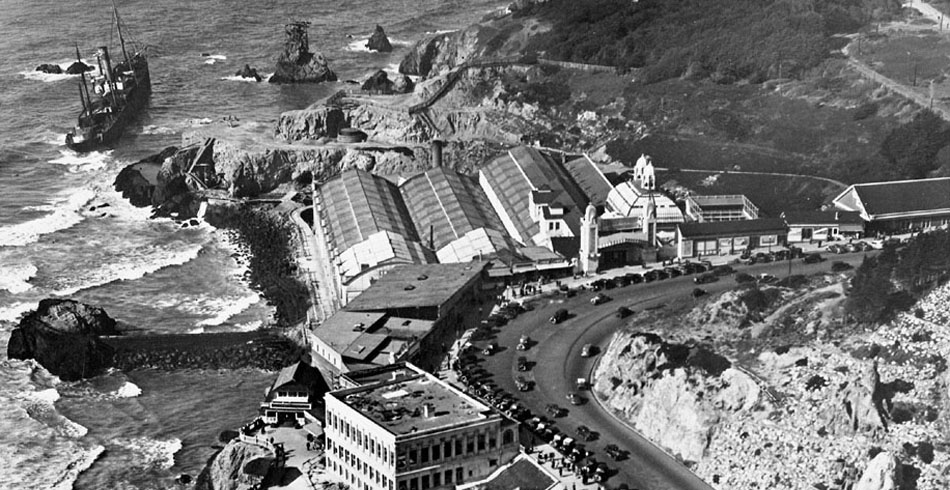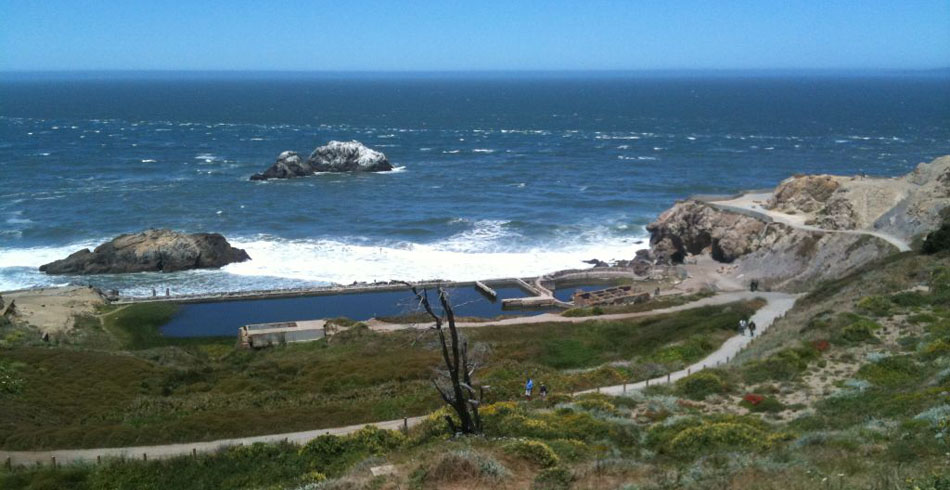Lands End Lookout
When you stand on the promenade at Lands End gazing out at the Pacific Ocean it feels like, if you could look far enough, you just might see the other side of the world. And if you lean over the edge, the wind almost supports your weight as you study the crashing waves and the ruins of Sutro Baths a hundred feet below.
The landscape is wild, but the Cliff House clinging precariously to the edge of the world is a testament to man’s repeated attempts to tame it. In fact, this struggle is the main interpretive theme of the exhibit housed in the new Lands End Lookout visitor center: “Here at Lands End, you are at the edge of the continent where the intersection of people and natural forces continues to change this wild landscape as they have for thousands of years”. As you start to explore the surrounding national park, you realize that the line between nature and culture is blurred everywhere – in the “natural” cypress forests, and rock cliffs of Sutro Heights Park, in the Stewardship program that collects seeds native to the watershed and tends to the restored natural habitat, and in every story of the site’s rich history.
This struggle between culture and nature is perhaps most evident in the ruins of Sutro Baths, where the remains of a huge man made structure have been reclaimed by nature into a thriving brackish marsh. The design of EHDD’s new building is inspired by these ruins – formed from a series of concrete walls that rise up out of the landscape to organize the building components and frame views. Across the grain of these walls, glass planes and reclaimed redwood siding reference the vernacular and monumental structures of the site’s past amusements – the steel and glass of the baths, but also the oyster and chop houses of Merrie Way.
While the building aesthetic references the ruins, its design is also inspired by the design of the original baths. Adolph Sutro was an engineer who made his fortune inventing a system of water and air delivery for the silver mines of Nevada. When he relocated to San Francisco, he recognized a unique opportunity in the bowl of the former Naiad Cove, choosing the site for his large public baths. Using the existing geology he captured the waves and through a series of tunnels and settling basins, used them to passively feed the pools of his new baths.
Similarly, the design of the Lookout takes advantage of the naturally prevailing winds and the existing topography of the site to passively ventilate the building, bringing air in low – below the floor – and exhausting it high through the clerestories above. This strategy helps make the building 32% more energy efficient than the ASHRAE baseline. It also creates a sunny wind-sheltered courtyard on the leeward side, providing a rare respite from the harsh environment for those exploring the trails and beaches of Lands End.
And, similar to Sutro’s use of wind power to pump water to his gravity fed irrigation system, solar panels on the Lookout roof help offset an additional 32% of the building’s remaining energy needs (making the overall efficiency 53% better than baseline). While the building takes advantage of many new technologies – efficient LED fixtures, lighting controls, energy star appliances and high performing glass, and insulation – it’s the natural ventilation and daylighting strategies that really make a difference.
I like to think about Adolph Sutro gazing out from his terrace, past the sculptures and his baths below, to the distant horizon. He’s wondering how to rebuild his Cliff House – after yet another devastating fire – this time out of concrete instead of wood. He never would have imagined that his ideals – of popular access to recreation and innovative efficient use of natural resources – would be echoed in a National Park Service visitor center on the site over a hundred years later.
Similarly, I can imagine EHDD’s late founder Joseph Esherick, standing on the edge of the continent a bit further north at Sea Ranch. Leaning into the same wind, he’s grappling with how to site the now iconic Hedgerow houses. It’s so satisfying, to learn from the work of those who have come before us. And it’s reassuring to think that even as we make so much progress, some things never change, and I hope the struggle between nature and culture is one of them – they both have so much to teach us.
For more on the history of Lands End:
On Adolph Sutro: http://www.sfmuseum.org/sutro/bio.html
On Sutro Baths: http://sutrobaths.com/explorebaths.shtml
On the Cliff House: http://www.cliffhouseproject.com/introduction.htm
On Merrie Way: http://www.outsidelands.org/merrie-way.php
On the new Lands End Lookout: http://www.parksconservancy.org/park-improvements/current-projects/san-francisco/lands-end-lookout.html
Phoebe Schenker, AIA, LEED AP BD+C
Project Architect


